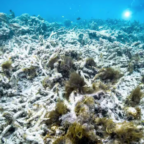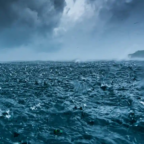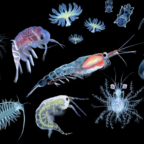
Looking for fish under pressure. Two marine biologists say they’ve set a record for the deepest underwater survey performed by human divers, at 136 metres down, off the coast of Pohnpei in the Federated States of Micronesia.
“We are seeing a lot of species previously unknown to science,” says Luiz Rocha at the California Academy of Sciences in San Francisco.
He and Hudson Pinheiro at the University of Santa Cruz have been looking for new fish species at these little-explored depths. The previous record for the deepest human survey, also set by Rocha’s team, was 130 meters. Many of the species they have seen are found only in these deep reef habitats.
The discoveries have their risks. “So few people have been to these depths that we are really dealing with many unknowns,” says Tom Bridge of James Cook University in Townsville, Australia.
Beyond 70 metres, high pressures can cause too much oxygen to pass into the body from the gas that divers breathe, which could lead to seizures and death.
The surveys involve laying down a 20-metre tape on the reef and counting every fish within 1 metre either side of it as they swim down its length. They repeat the procedure every 10 metres they descend. Other biologists have gone deeper, but only for quick collecting forays, says Bridge, rather than for full surveys.
The hard numbers on fish populations gained in these surveys will let scientists compare deep reefs with other habitats for the first time. “As an ecologist, this is very exciting to me,” Bridge says.
Although a few coral species can survive in this extreme environment, a close relative of coral, gorgonian sea fans, tend to form the base of deep reefs, says Bridge. The team wants to know what makes deep reef fish communities different from shallow ones, and to see to what extent the two ecosystems are ecologically connected, says Rocha.













Social Profiles